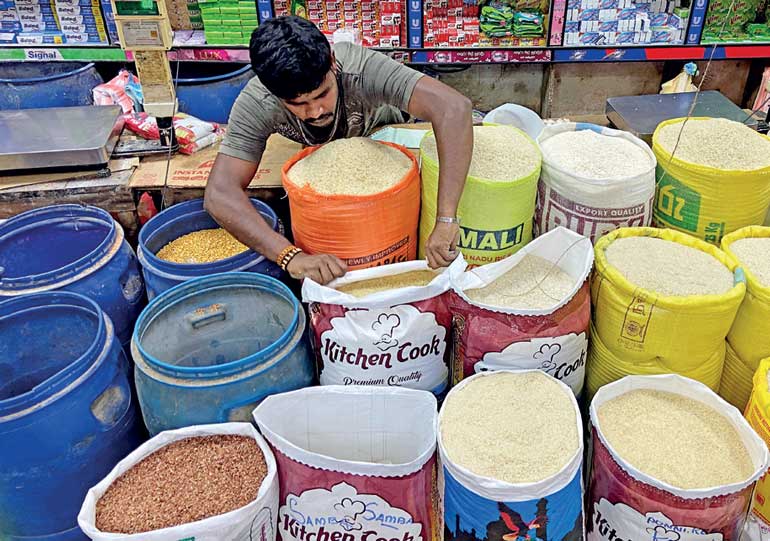Friday Dec 05, 2025
Friday Dec 05, 2025
Tuesday, 20 September 2022 01:18 - - {{hitsCtrl.values.hits}}

By Charumini de Silva
The soaring cost of living is putting enormous pressure on consumers, whilst the suppliers claim they are compelled to raise prices, given the high fuel, electricity, and costs of production.
The ever-increasing cost of living has now turned into a social issue with the Government and international agencies calling on donor help to overcome the situation.
The United Nation Resident Coordinator Hanaa Singer-Hamdy also called on the world to show solidarity to address shortages in food and medical supplies.
“Sri Lanka’s gains in healthcare, education, and poverty alleviation are being threatened by the current crisis. #SriLanka needs her friends to show solidarity to address shortages in #food and #medical supplies,” she tweeted yesterday.
On 12 September, the Food and Agriculture Organisation and World Food Program reported that Sri Lankan children are acutely vulnerable to the worsening social crisis. It noted that an estimated 6.3 million people faced “moderate to severe acute food insecurity,” and that their situation would worsen if no adequate “life-saving assistance” and livelihood support was provided.
The report also warned that this would further deteriorate from October 2022 to February 2023 due to poor harvests of staple foods, such as paddy rice and the ongoing economic crisis.
The irked consumers charged that the food inflation is at an unbearable level, with many finding it difficult to provide three meals for their families.
“We are finding it extremely difficult to provide a balanced diet for our children. The fish prices have come down a little, though prices of chicken, eggs, spices, and wheat flour are soaring. Most of the vegetables are also significantly higher compared to a couple of weeks ago,” they told the Daily FT on anonymity.
As per the weekly economic indicators, staple food prices have increased significantly except for rice, which has maintained stable prices.
Dependants on the Government pension said they were spending threefold for the same goods they bought a couple of months ago.
“It is hard to manage. We have no choice but to penny-pinch our pockets,” they added.
The year-on-year food inflation increased to 93.7% in August 2022 from 90.9% in July 2022 as per the Colombo Consumer Price Index.
Despite consumer complaints, traders at economic centres said the vegetable prices have dropped slightly compared to last week, though the quantities purchased by consumers have dropped sharply.
“People do not have money to buy the quantities they used to. The footfall to the economic centres has dropped sharply due to the high fuel costs. The wholesale traders also have reduced their quantities, citing they do not have a good sale because of the prices. The overall situation is neither good for the businesses nor the consumers,” he said.
Last week, the price of a kilo of carrot was around Rs. 250 - 300, beans at Rs. 400 - 450, brinjal Rs. 300 - 320, leeks Rs. 180 - 200, pumpkin Rs. 140 - 150, tomatoes Rs. 180 - 200, capsicum Rs. 650 - 700 and snake gourd Rs. 180 - 200.
Traders also said prices of commonly used everyday vegetables are touching the sky as they spoil very quickly due to the damp conditions they encountered over the past couple of weeks with the torrential rains.
Peliyagoda and Negombo fish market traders said the fish prices dropped last week, but the quantities bought by consumers have continued to drop, indicating the low purchasing power of people.
The poultry traders said they see an 80% drop in sales due to the rise in prices over the past month. At present, a kilo of chicken is sold at Rs. 1,600.
“Our sales have dropped, but the cost of production and operations has increased with the animal feed, electricity tariffs, rents, and fuel costs,” they explained.